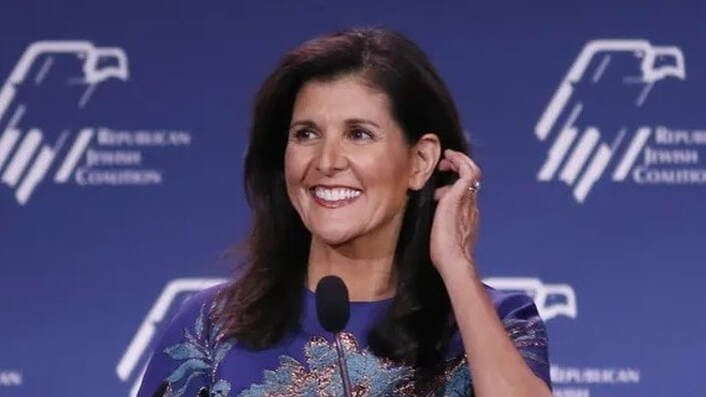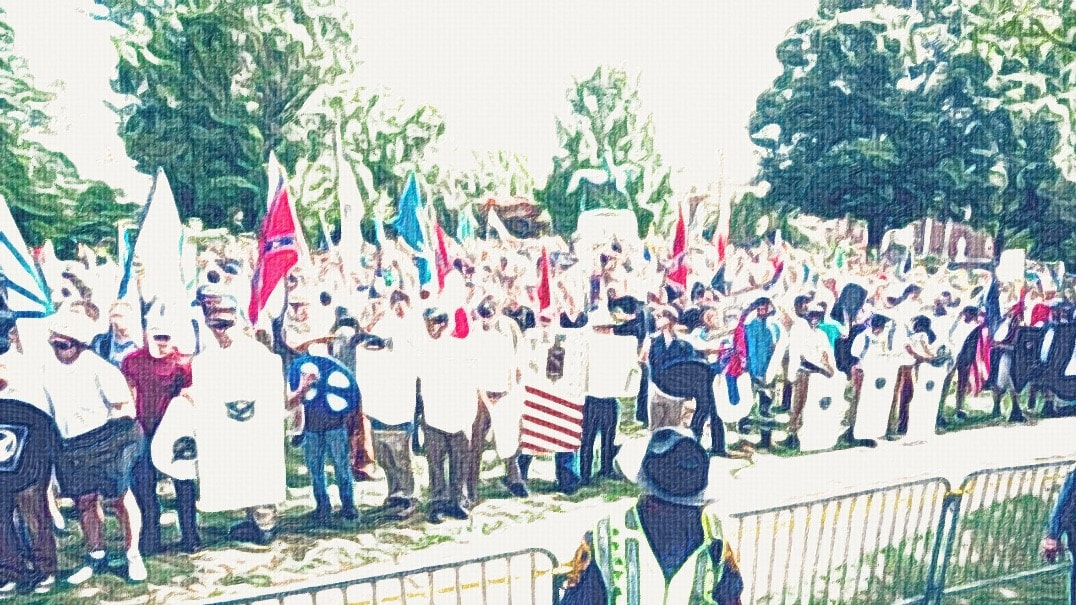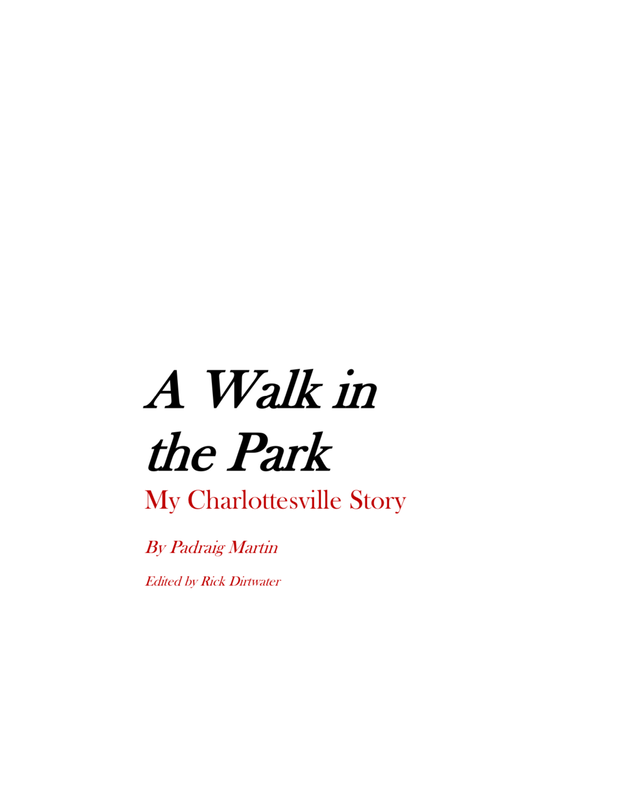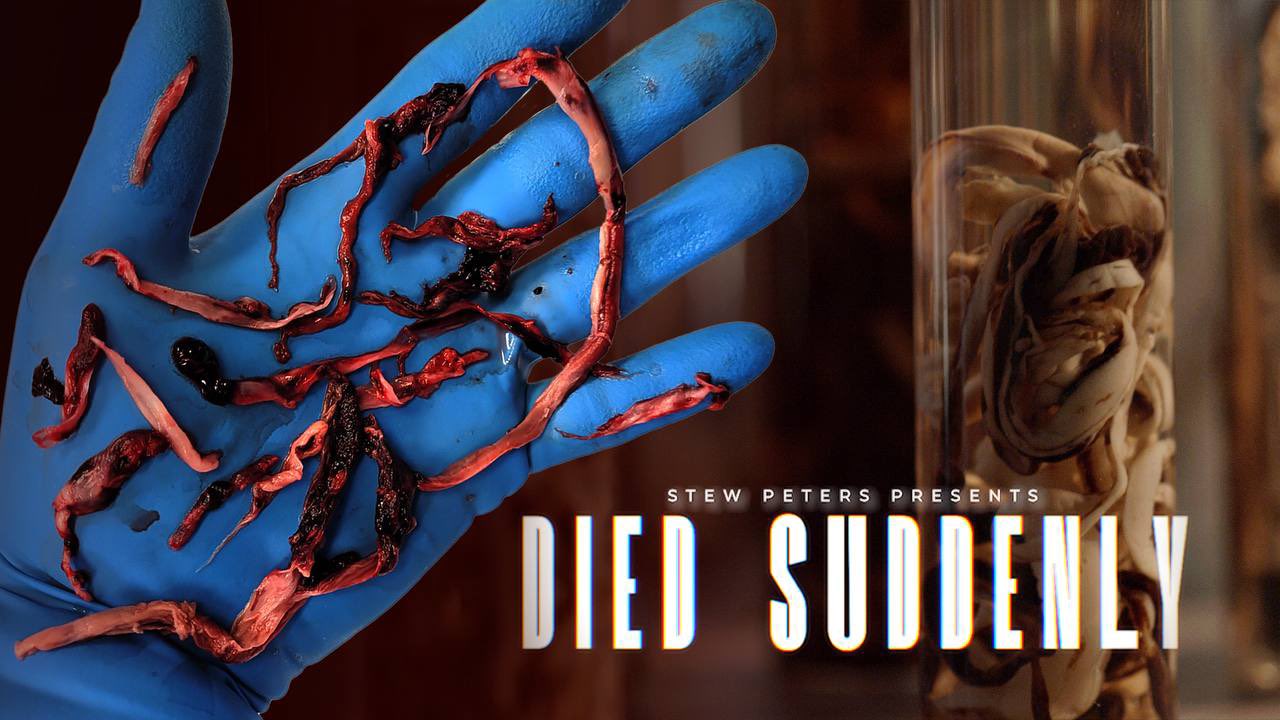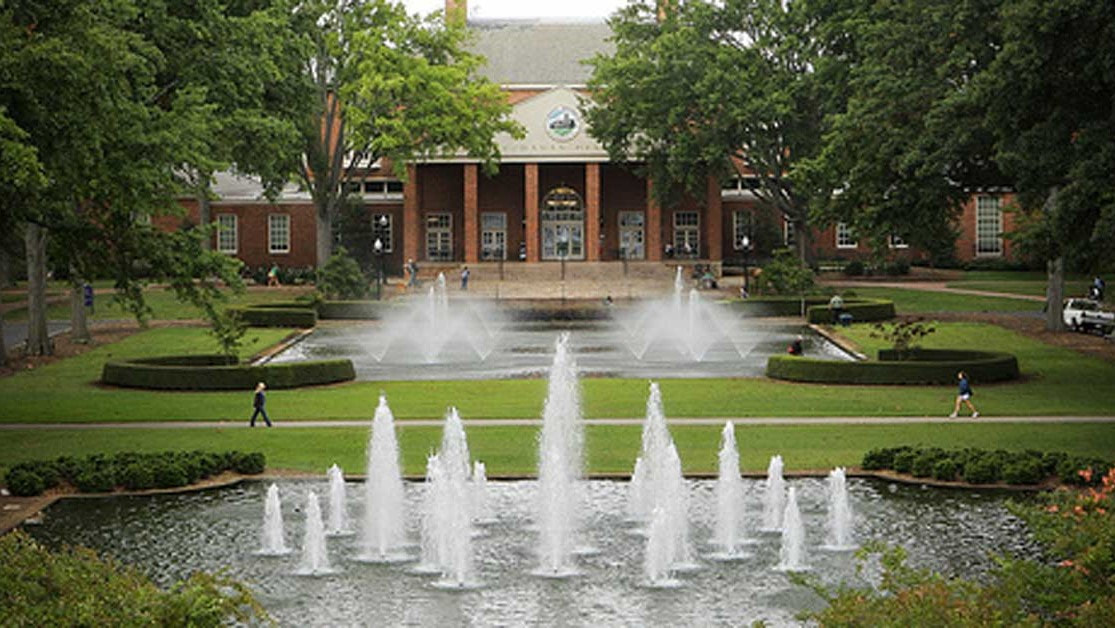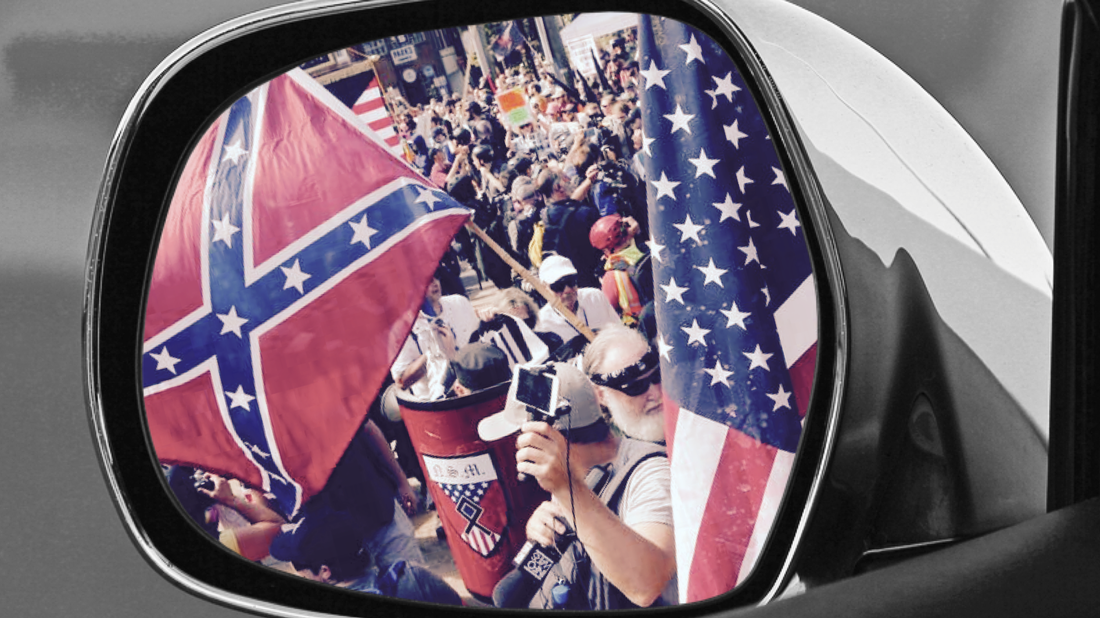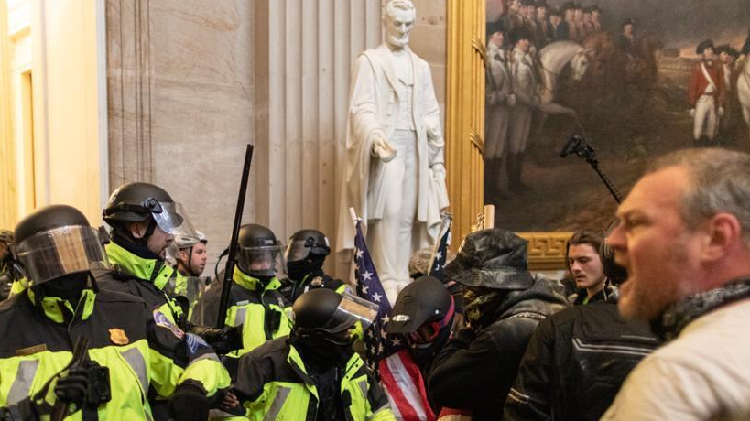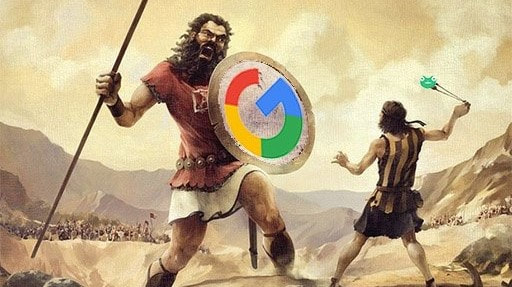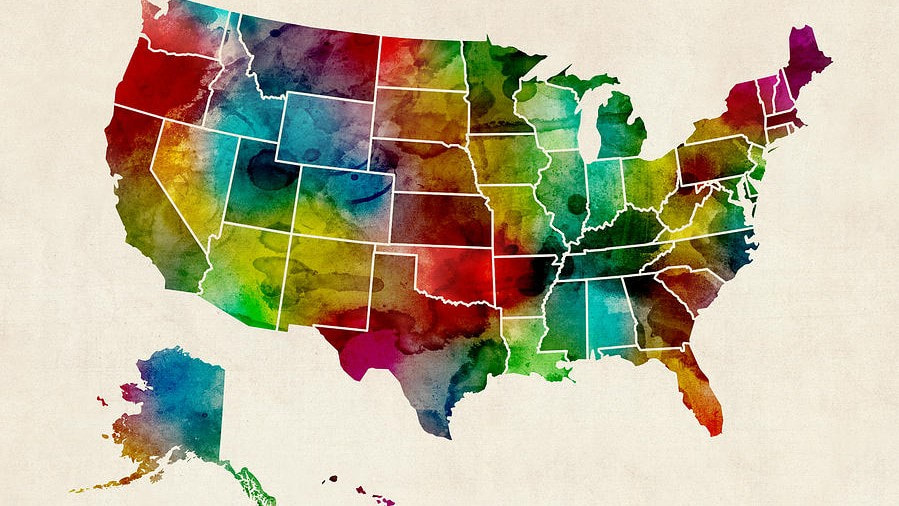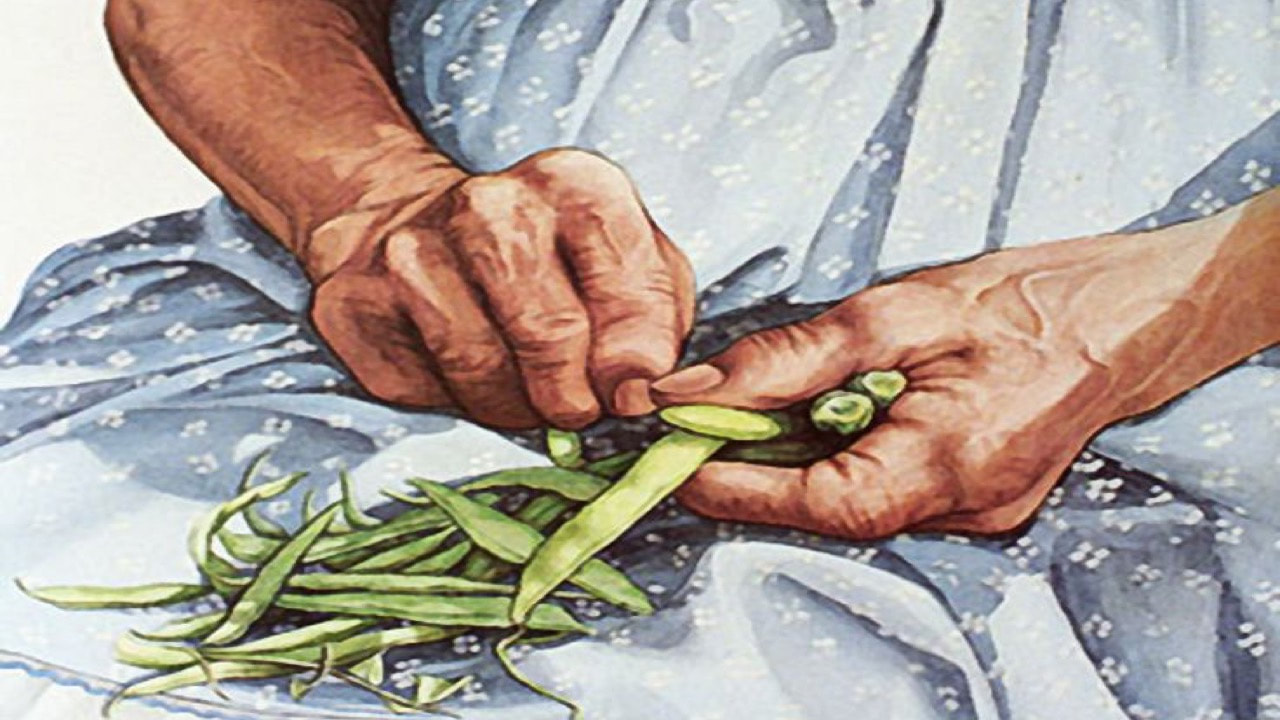|
There is increasing chatter about potential candidates for the 2024 Republican presidential nomination. The top polling candidates are currently Donald Trump - who disappointed in virtually every conceivable way when he previously held the highest office in the land - and Ron DeSantis, the popular Florida governor and an apparent maverick who has pushed against the federal government on issues like COVID restrictions and the LGBT agenda. However, it appears another familiar face may soon darken the door of the Southern electorate. Last week former SC Governor Nikki Haley did an interview which suggested that she is exploring the possibility of becoming a candidate. Haley is one of the most despised contemporary politicians by Southern heritage supporters. Among this group, she is primarily remembered for taking the opportunity of the mass murder enacted by Dylann Roof to remove the long-contested Confederate flag off the grounds of the SC State Capital. She successfully parlayed her reaction to the tragedy into an entrée into national politics. Ever since, she has been adequately but unremarkably fulfilling her role as a minion of globalist operatives, performing duties such as cheerleading for war while acting as Ambassador to the United Nations. Those of us who are familiar with her shifty behaviour will not be surprised to learn that if Haley were to run, she would be reneging on prior public declarations that she would not run against President Trump. Haley is currently polling in the single-digits as a 2024 contender by most measures, however, she is still on the short list. One wonders if she is hoping to be offered a running-mate position for which she would offer gender, race, age, and regional balance to a Trump candidacy. I would like to think that the political aspirations of the duplicitous neocon would be a non-starter, but it would be premature to predict that. One local SC reporter who has been following Haley since she was a state representative remarks, “I have taken a dim view of Haley over the years, but I have never – and would never – write her off." Perhaps she does have the skills and appeal to fully realize her highest ambitions. Still, we may be consoled by the fact that she is running for Captain of the Titanic - as empty a victory as ever could be.
3 Comments
In the five years since the Unite the Right rally in Charlottesville made international headlines, much has been written and said about it. Unfortunately, most of the analyses available are worthless. The majority of historically illiterate writers can see only through the skewed lens of the social justice paradigm, and are unable to perceive right-wing thought and activism as anything other than "hate" which threatens progress towards egalitarianism. Thankfully, this week a new book about Unite the Right has been released: A Walk in the Park: My Charlottesville Story, by Padraig Martin. Martin, a frequent writer for Identity Dixie who personally attended the UTR, examines the notable event from his personal perspective while also giving insight to its significance in a larger social and historical context. Martin walks the reader through the events of the years immediately before and after Unite the Right, accompanied by insights drawn his extensive military and business experience and advanced specialized studies. He explains how societal changes during the Obama and Trump eras, as well as his personal experience at Unite the Right, shaped his transformation from a mainstream conservative to dissident political thinker. Martin's detailed description of his experience on August 12, 2017 affirms that of others who were in attendance that day. His noteworthy testimony includes his witness of pre-rally conversations with law enforcement officers, and his arrest and subsequent chance encounter with James Fields, the young man who was arrested for driving his car into a crowd of rally protesters. His story also conveys to the reader the real costs associated with anti-establishment activism, since publicity about Martin's arrest (for carrying a weapon without a proper permit) led to serious consequences in his personal and professional life.
Though not a close follower of the COVID vaccination controversy of the past few years, I am aware that many people have had health concerns related to the vaccine. It can be difficult for a layperson such as myself to distinguish "conspiracy theories" from legitimate issues, especially about a topic that is so fraught with controversy. Therefore, I am glad I found time to watch the newly released documentary, "Died Suddenly," produced by internet show host Stew Peters and former congressional candidate Lauren Witzke. Only an hour long, it is packed with compelling information and well worth your time. The video first presents a series of interviews with members of a profession to which most of us give little thought: embalmers. Their testimonies convincingly demonstrate that in the year after COVID vaccinations were rolled out, a never-before seen phenomenon occurred: long, rubbery clots appeared in the veins of many young and middle-aged people who had died unexpectedly. Ample, gruesome footage of the clots accompanies the testimonies. Testimonies of other knowledgeable professionals are featured, including a former physician for the US military-turned-whistleblower, a renowned high-risk pregnancy physician, an obstetric nurse, and a formerly pro-vaccine investigative journalist. These witnesses attest to a drastic increase in deaths, miscarriages, and a variety of other health problems over the past two years. These shocking increases are also powerfully conveyed with animated graphs. Though most of the focus of the documentary is on "what" has been happening, the question of "why?" is touched on as well. It features statements about global sustainability and the need for depopulation from Bill Gates and members of the World Economics Forum, among others. Several of the whistleblowers look even deeper to the reason the seemingly dangerous jabs were promoted, musing about the powers of darkness that the Bible warned were enemies of God's creation. The alarming and morbid information presented is juxtaposed with montages of cheerful pro-vaccine messaging and celebrity mockery of anti-vaxxers, to eerie effect. The mainstream media is busy denouncing the documentary, but you can still view it on Stew Peter's site, Rumble, Gab, and other platforms. The communist purge of dissident thinkers marches on, and as our Puppet-in-Chief has declared, "White supremacy" is the preeminent threat faced by the nation. Today January 6th participants languish in prison, and pro-life activists have their homes raided by the FBI while getting ready to take their children to school. The claws of the empirical thought police even reach into the past. The Unite the Right rally in Charlottesville in 2017, upon which I have reported extensively, is a faint memory to many. But the ill-fated Virginia rally, which in another timeline might have been a seminal event in a nativist uprising, is still alive in the minds of so-called anti-fascists who center their identity upon stalking “Nazi, White supremacist” boogeymen wherever they may be found or invented. Even today, anti-fascist researchers meticulously scan photos of the Unite the Right crowd, seeking to identify thus-far anonymous attendees. Last week, one of the Unite the Right attendees was identified as Dr. Chris Healy, a computer science professor at Furman University. He is currently on suspension while the university investigates him for possible connection to White supremacist groups. To be clear, Healy is not suspected or accused of doing anything other than simply attending the event. Furman President Elizabeth Davis released a statement saying, in part, “The views of the organizers of the Unite the Right rally do not reflect the values that I hold, and they are not the values that we have committed to in our vision, mission and values statements. They are harmful to members of our community, diminish a sense of belonging, and inhibit each individual’s opportunity to thrive.” The statement provided numbers for half a dozen counseling resources for those who are traumatized to learn that they may have been unwittingly in the presence of a faculty member who was not a left-wing ideologue. Campus freedom advocacy group Foundation for Individual Rights and Expression (FIRE) has taken up the cause of Healy, writing, “not only is Furman violating its binding contractual obligations, it is also defying a South Carolina law that prohibits employers from dismissing employees like Healy for their protected political activity.” The group has demanded that Healy be returned to the classroom immediately. Predictably, many others are clamoring for his immediate removal. Meanwhile, “fash researchers” are doing high-fives on Twitter, celebrating their collection of another scalp for their cause. One anonymous tweeter responded to the account that doxxed the professor with the statement, “For all the people celebrating this, you're all jumping to conclusions that are false. I know Chris Healy personally. He's a very good, moral man and would never wish harm or discrimination on another person. It's like you're attacking Mr. Rogers. I'd stake my life on this.” Is this anonymous claim true? I don’t know, and neither do those cheering for his ruin. But to the bloodthirsty crowd, tragically, it doesn’t matter. In the eyes of most Americans, the incidents of August 11th and 12th in Charlottesville, Virginia were an anomalous part of recent American history. They believe that White supremacists descended upon an historic Southern city, bringing hatred, havoc, and death. Most have likely given it little thought over the past four and a half years. However, those of us with more than a passing knowledge about Unite the Right know that the mainstream "common knowledge" about the event is far from the truth, and we know that its true significance amounts to far more than a distant blip on the news about an ill-fated summer weekend in Virginia. The truth of the matter, supported by voluminous documentation and eyewitness testimony, is a tale of government treachery and anarcho-tyranny. The attendees of legally permitted rally were intentionally surrounded by a hostile, armed mob of their enemies and left to literally fight for their lives while local, state, and federal "law enforcement" authorities stood idle. After the event went awry, attendees were maligned with propaganda emanating from across the nation - including supposedly right-wing-friendly news outlets and public figures - who attributed intentions to them without regard for accuracy, and portrayed them as the perpetrators of the mayhem. Just as they were being subjected to a coast-to-coast chorus of vile accusations, an unprecedented wave of censorship drove rally organizers and attendees from virtually every public platform where they might refute those accusations. The "insurrection" that took place at the Stop the Steal rally in Washington, DC, on January 6, 2021, has evoked comparisons to Unite the Right. Though the rally contesting the 2020 election results was different in many ways from the Charlottesville one protesting the removal of a Robert E. Lee statue, there are still important similarities; in fact, one might even say that the "J6" events were a repeat of the same template, writ large. In Charlottesville, law enforcement inaction (or possibly malfeasance) created the pretense of a dangerous uprising, which was followed by successful vilification and persecution of the Alt-Right in 2017. The same thing happened to supporters of President Trump in 2021, when elites seized upon the “insurrection” as an opportunity to declare mainstream right-wingers to be White supremacists and terrorists. Similar to Charlottesville, the criminal courts have been used as a tool for punishing J6 political dissidents. In each case, attendees accused of crimes faced repercussions far beyond what would be typical based on their deeds alone. Numerous reports have emerged of J6 defendants being denied due process, mistreated, or even subjected to torture. Were we to hear of such treatment of political dissidents taking place in another part of the world, we would not hesitate to condemn it as a violation of human rights. Abuse of civil litigation was also weaponized against Charlottesville participants. During October and November of 2021, a long-awaited trial against a group of Unite the Right organizers and notable attendees took place. The Sines v Kessler suit was brought by a group of nationally renowned lawyers and funded by Hollywood, Silicon Valley, and regular citizens who donated to help an elite team of Washington and Wall Street-connected lawyers #SueANazi. The lawsuit is the sort that some have termed a "SLAPP," that is, a strategic lawsuit against public participation. While supposedly brought on behalf of "victims" of the rally, the lead attorney bragged that the aim was to create a deterrent effect against "White supremacists" organizing, and she pledged to "chase them around for the rest of their lives." The plaintiffs included some people who, while seriously injured in the car crash, dubiously attributed their injuries to rally planners and headliners in addition to the driver of the car that struck them. Other plaintiffs, most clearly left-wing activists, were physically unharmed but claimed to suffer residual trauma from their proximity to the rally. The case concluded with a $25 million judgement against the rally organizers, which was touted in the headlines and by the plaintiffs’ attorneys as a decisive victory against "hate." In reality, it was a mixed result. About half of the award amount was against the driver in the fatal car crash, James Fields, a mentally ill indigent who has already been sentenced to hundreds of years in prison and who is unlikely to produce a penny of the money. The rest of the amount, which was divided among various people and organizations, is far less than the $10 million per plaintiff that was sought, and is likely to be reduced further post-trial. Interestingly, the compensatory damages awarded to plaintiffs were either $0 or $1, suggesting that the jury found the plaintiffs disingenuous and not much more likable than the defendants. Though the Sines v Kessler lawsuit, four years in the making, cost the plaintiffs about $25 million (the same as the final judgement), the plaintiffs’ backers have the deep pockets to absorb the cost. By contrast, six or seven-figure judgements are enough to be crippling for the mostly working class and indigent defendants, and the process of the trial itself was financially and personally burdensome. The tactic of pursuing civil litigation to bankrupt ideological opponents of the regime is now being used against groups who participated in J6 as well. So where do things stand now? Some Unite the Right participants have persevered in fighting for their causes, despite being besieged by financial and legal challenges. Some of the biggest names associated with Unite the Right have stepped into relative obscurity, either working in a more subdued manner on their activism or retired altogether. At least one has declared bankruptcy and another is on the lam. One Unite the Right headliner, podcast host Christopher Cantwell, was convicted subsequently for online threats made against a rival. Though his record is spotted with a series of relatively minor crimes, he is now being housed in a communications-restricted unit within the Federal prison system informally known as “Little Guantanamo” alongside “low-level terrorist” Muslim extremists. That this is the fate of a man mostly guilty of word crimes should concern everyone who cares about human rights, not just political dissidents. This is especially true in light of the fact that our ruling regime has determined that “white supremacist terrorism” is now the nation’s preeminent threat. Most of the legal issues emanating from Unite the Right have been resolved, though a lawsuit by the main rally organizer against the city of Charlottesville for violating his First Amendment rights is still winding its way through the court system. It could conceivably end up before the Supreme Court, assuming the vestiges of the United States last longer than the trial process. Over the past four years, the elitist-approved version of Unite the Right became cemented in the minds of most the American public. One may hope that the progression of the communist revolution will eventually lead to greater retrospection and a more accurate understanding of the events of Charlottesville, VA, in August of 2017: The truth that it was a harbinger for the fate of historic America. As I walked along the seashore, this young boy greeted me. He was tossing stranded starfish back to the deep blue sea. I said, “Tell me why you bother, why you waste your time this way. There’s a million stranded starfish, does it matter anyway?” And he said, “It matters to this one. It deserves a chance to grow. It matters to this one, I can’t save them all I know. But it matters to this one, I’ll return it to the sea. It matters to this one, and it matters to me.” In a lot of ways, things look bleak. Tyranny, degeneracy, and injustice are now the norm in our nation, and everything seems to be tracking in the wrong direction. There is faint hope of recapturing our deteriorating institutions. But what can any of us do about it? Some hold signs of protest in front of government buildings. Others complain about hypocrisy and unfairness on social media. Though there is no obvious resistance leader in sight, some people consume "hopium," waiting for the return of Donald Trump or some other savior to put the nation back to right. Others crave revolution, but that is dangerous, uncertain and does not seem to be imminent. So is there anything ordinary people can do about our dismal state of affairs, other than wait for doom or pray for rescue? You can't turn around the Titanic and save the whole nation, that is true. But there are things you can do - realistic, simple, and practical things, that will make a difference within your sphere of influence. Here are a few ideas (and thank you to the Gab community for contributing to this list). Many of these suggestions are low effort and have secondary benefits of improving your health and well-being or saving you money. 1 - Spend your money wisely. Here's a no-brainer: Stop supporting people who hate you and aggressively propagandize against everything you care about. Resolve to stop supporting Hollywood. Cut off your cable. It may take some adjustment, but there are an infinite number of better ways to spend your time than passively absorbing toxic forms of entertainment. Support locally owned businesses that share your values. If you know of a worthwhile business or service, make a point to tell others about it in person and online. Small shops cannot compete with the advertising budget of big corporations and they rely on word of mouth to grow their business. Ask your neighbors for more ideas. Conversely, tell businesses that support degeneracy and tyranny why you won't be patronizing them any more. Buy second-hand goods from thrift stores. This has multiple benefits. You are denying profits to chain stores that sell foreign goods and push a godless agenda. Reusing old items is an exercise of good stewardship that cuts out waste. It will also likely save you money. (In fact, you might even be able to make money. I have an acquaintance who supplements her income by cleaning up thrift-store goods and reselling them on Ebay.) Stop using credit cards and big banks. Make a plan to eliminate debt and move your money to a credit union. As cash depreciates, think about buying goods that will retain value or spending now to build a store of supplies that may increase in cost, such as housewares, dry goods, clothing, medical and emergency supplies. 2 - Think local. Washington DC is an atrocity beyond repair, but, depending on your locality, you may be able to make noticeable a difference in your own back yard. Attend city and county council meetings. Pay attention to what is going on and speak your mind when appropriate. Get to know your local representatives and government leaders. If your kids are in public school, get involved there. Go to school board meetings, and get to know your principals, teachers, and the school curriculum. Ally with other parents. No kids in school? Maybe you can offer something for local school kids anyways. Think of starting or assisting with something like a School Time Bible ministry or voluntary after-school program - it could be for academics, sports, or some kind of special interest. Obviously possibilities will differ depending on where you live. Get to know your sheriff and local law enforcement officers. As things get more precarious at a national level, their role will be more important than ever. If they are worthy of your support, get involved with their charitable or community outreach efforts. Figure out which of your local charities are doing good work, particularly for groups (like Whites, for example) that may be last on the list or even excluded from government or corporate charities. Ask how you can help. They may require simple tasks or materials which can be fulfilled with minimal time and effort. 3 - Watch what you eat. This goes beyond superficial concerns about appearance. Being as mentally and physically healthy as possible makes you better able to serve your family and community. Stop eating fast food and processed food. Buy locally produced foods. Grow a vegetable garden and involve your children. Make and use a composter. Consider joining a vegetable co-op or starting a community garden. 4 - Grow your community. Many of us do not know our neighbors beyond the occasional perfunctory wave "hello" when checking mail. Change that! Organize a block party or beautification project for your street. Check on the elderly folks and let them know you are available if they need help with anything. Attend neighborhood watch meetings. It can be awkward to re-introduce yourself to people whose names you may have forgotten, but building bridges is a worthwhile effort. Join groups where you can network with like-minded people and work to support one another. Having friendly, supportive relationships is both personally rewarding and a smart way to develop alliances for when times get hard. Conversely, re-examine your current associations. Are you spending time, money, and energy on groups and people who do not support you in return, or who are not in line with your goals and beliefs? In some ways these familiar associations are comfortable, but they may not be what is best for you. Consider whether you should focus your time and resources elsewhere. Pay special attention to young people. Remember, they have never known what those of Generation X and older knew as traditional America, and have been led to believe it was always hellscape of evil and oppression for everyone except White men. They have spent their entire lives essentially being gaslit from all sides - entertainment, education, government, and in many cases their parents. The "mindset list" is issued each year to give educators an idea of the perspective of the rising college freshmen they are teaching. The 2022 mindset list states, "When filling out forms, they are not surprised to find more than two gender categories to choose from." It is hard to overstate the degree to which young people today are marinating in a barbaric and toxic Alice-in-Wonderland world. I recently learned that a young man at my church was beaten so badly as to require hospitalization by some classmates who were under the mistaken impression that he had used a racial slur. Another young woman watched a friend get pushed down a flight of stairs after she unwittingly "misgendered" a fellow student. In both cases, school administrators did nothing to oppose the perpetrators - and these incidents took place in a suburban area of a red state. I will say it again: Many, many young people are in desperate need of love, support, and sensible guidance. Think of how you might help them. Luckily the young people I mentioned have good families, but so many do not. Those growing up in this environment may have an unspoken suspicion that things are not as they should be, but be unable to fully understand and articulate what is wrong. If their parents are absent or have succumbed to communist propaganda, there may be no one in their world providing an oppositional perspective. One need not reach out to them with an aggressive counter-propaganda campaign. Even a simple statement like, "You kids have it rough. It wasn't like this when I was in high school," will convey that you care, and give credence to their inner sense that it's the world that's out of whack, not them. 5 - Be a flamekeeper. It will take effort to preserve traditions, knowledge and skills in this age of internet searches and disposable conveniences. What can you do? Set a goal to learn a skill. Learn to play an instrument. Learn a new language. Master a traditional handcraft like woodworking or quilting. Think of skills that might be of use in case of a medical emergency or loss of infrastructure. Consider what your great-great-grandparents did for themselves: Build furniture, make clothing, preserve food for winter, purify water. Learn how to do some of those things. Challenge your kids to develop skills that don't involve electronics. Teach them simple skills that would be needed if the internet went away, like how to read a paper map or use reference books. Speaking of books, start collecting them. Make an effort to establish a personal hard-copy library of reference books, classic literature, accurate history books, and anything else that the ruling elites might want to edit or purge. Collect traditional board games or hobby items. People once entertained themselves without TV and the internet, and they may one day need to do so again. 6 - Watch what you say.
This is one of the most simple suggestions, but also may require the most bravery. One leftist strength is their normalization of language that promotes their ideas in thought and discourse. Even conservative speakers are often quick to adopt words and phrases that implicitly accept leftist framing of issues, like "undocumented immigrants," "homosexual marriage," "transgender," and so forth. Make a conscious effort to stop doing that, and to instead use language that creates a different framing. For example, there is a burgeoning awareness among the general public of the elites' opposition to the interests of White people. A simple but powerful thing you can do to help change the way people think is to change the way you speak. The phrase "anti-White" has moved from the pages of dissident right websites into the edges of the public sphere where it is occasionally uttered by the likes of Tucker Carlson and Ron DeSantis. Keep using it whenever possible. In fact, using phrases like "White people," or "White community," even in an innocuous way, may help deracinated people to start thinking of themselves as part of a group, and awareness is the first step towards creating a meaningful movement against those who oppose us. "Anti-Christian" is another term we could be using more often to bring focus to the purpose of the progressive agenda. And try substituting "communist race ideology" for Critical Race Theory. That is, in fact, a more precise description of what it is. There are endless possibilities. Take notice of any PC conditioning you might have absorbed into your vocabulary, and make a conscious effort to change it. I hope at least some of these suggestions are useful. If you have more ideas, please share them in the comments. The debacle at the United States Capitol building last January 6th is still being analyzed and debated, but we can already see the shape the fallout is taking. Nancy Pelosi recently claimed that the rioters "chose their Whiteness over democracy." Arnold Schwarzenneger likened the event to a Nazi attack. A chorus of left-wing politicians, and some supposedly right-wing ones, are decrying the protests as being rooted in White Supremacy.
What is happening to the Stop the Steal rally attendees is exactly what happened to the Charlottesville Unite the Right attendees, writ large. Attendees of the Charlottesville Unite the Right rally self-identified as many things - historical preservationists, Southern heritage supporters, Southern Nationalists, American nationalists. Some were members of groups that embraced European and White identity in a positive manner which promoted no malice towards others. Some were National Socialists and White Nationalists. Others, probably a small minority, could accurately be described as "supremacists." In keeping with the "Unite the Right" theme which meant to draw a broad swath of people to stand up for the right wing in general, about a thousand people were in attendance, representing a wide variety of groups with differing goals and beliefs. All of them - ALL OF THEM - were relentlessly branded as "Nazis" and "White Supremacists" by the national news media. ALL OF THEM were implicitly blamed for the events of the day, which has now been firmly cemented in the minds of the American public as a "deadly White Supremacist rally." The most powerful voices in America, seeing an opportunity to further a narrative favorable to their goals, did not care to ask whether it was accurate to describe everyone there as a "Nazi" or "White Supremacist," and they did not care to ask about the degree of blame due to the authorities for the "deadly" part. Most of the American public uncritically lapped up the preferred narrative of the elites, that Nazis and White Supremacists, emboldened by their leader Donald Trump, had laid siege to Charlottesville, Virginia, resulting in carnage. The few people who knew the truth of the matter, branded with the most foul possible stigma and hobbled by censorship, were powerless to refute the myth. The villainized attendees suffered varying types and degrees of political and criminal persecution. Some who engaged in physical altercations were punitively overcharged for their actions, while serious misbehaviour on the part of leftist counter-protesters was minimized, ignored, or even celebrated. Civil cases which may be described as "lawfare" were filed against parties involved with organizing the event. Some attendees were doxxed and hounded by self-righteous mobs of activists into ostracism and unemployment - one man was even driven to suicide as a result of being so targeted. Organized groups that had been represented at Unite the Right were purged from social media and deplatformed from all kinds of online services. Indirectly, everyone associated with the political movement that Unite the Right represented was affected by censorship as the Big Tech overlords clamped down on their "dangerous" speech and ideas. This is what people must understand: Everything that happened at Unite the Right in Charlottesville is happening again with Stop the Steal in DC. The kneecapping of the extreme right elements that gathered in Virginia was a dress rehearsal for what is happening to Heritage Americans as a whole now. Just as the "punch a Nazi" meme turned overnight from "It's okay to punch Richard Spencer" to "It's okay to punch anyone with a Trump hat," the condemnation of Charlottesville participants has morphed into condemnation of all American nationalists. Other aspects of the Charlottesville reaction are being repeated. There are calls to charge people who are guilty of at most trespassing and vandalism with treason and sedition. There was a swift and severe deplatforming and censorship reaction that reached all the way up the highest office in the land. Donald Trump, while still holding the office of President of the United States, had his ability to address his tens of millions of supporters stripped away by the technology oligarchs at Facebook, Twitter, and YouTube. A large rival company supported by dozens of popular, nationally-known conservatives attempted to provide an alternative platform, and was wiped completely off the internet by executives at Amazon. While half the country's communications is hampered, an alternative, false interpretation of the events is being hammered into the public by our elite class. Treason! Sedition! An attempted violent coup of our democracy inspired by conspiracy theories about election fraud, and egged on with incitement from the losing candidate. (A video in which Donald Trump clearly told his supporters to protest "peacefully and patriotically" is being scrubbed from the internet.) Another similarity in the Charlottesville rally and the Capitol "siege" is the conspicuous absence of law enforcement. In Charlottesville, witnesses on both sides of the political spectrum reported, and an independent investigation confirmed, that an ineffectual and passive law enforcement presence was a major factor in the calamitous turn of events. It is shocking that our Capitol building could be easily breached by a disorganized group of mostly unarmed protesters, and it is puzzling that this egregious failure of law enforcement is almost completely unnoticed by those who are most enraged by the "siege." Another aspect of the Charlottesville fallout is beginning to be repeated. Jason Kessler, the organizer of the Charlottesville rally, has for several years been reporting on the journo-activists who targeted attendees of Unite the Right - activists like Ford Fischer and AC Thompson who created the award-winning "Exposing Hate" documentary. For this work, they besieged Unite the Right attendees by, for example, ambushing them with camera crews at their place of employment. Their reporting omits mention of the threats and violent behavior of the left-wing participants, and uses deceptive editing and scary music to portray the rally participants as dangerous instigators of violence. Kessler explains, "These men essentially blood libel the participants of the protests by omitting crucial evidence that makes them look bad." They have begun work on a new project focused on the events of January 6th. Unite the Right participants did not expect the events to go awry as they did. However, most of them at least realized that they were on the edge or outside of the Overton window and that expressing their beliefs would shock some people and draw strong criticism. Participants of Stop the Steal are, by contrast, lambs to the slaughter. Most of them are moderate, conservative Americans who are operating under the assumption that we still live in the country in which they grew up. Unite the Right attendees were disabused in 2017 of the idea that the freedom of speech and assembly are still protected. MAGA-Americans are for the most part unaware that we are experiencing a shift to a new regime - a regime in which expressing a belief in traditional American values may be considered domestic terrorism. They have no idea that they are potential targets for doxxing, violence, un-personing, and abusive prosecution which befell the Charlottesville attendees. As the nation becomes assimilated into the reality of the communist regime, they are about to learn a painful lesson. This week, we learned a lot about who wields true power in the world. On January 6, 2021, a crowd of mostly Trump-supporting protesters surged past security into the White House due to frustrations over unanswered claims of election fraud. This act is being described by some as an act of mostly peaceful civil disobedience coupled with antics akin to a fraternity prank, and by others as an attempted overthrow of the government based on "incitement" by President Donald Trump. In response, with rationale about the public safety and prevention of violence, tech oligarchs like Jack Dorsey and Mark Zuckerberg did something that would have once been considered unimaginable. These unelected CEOs of private companies, in collusion with his political enemies, for all practical purposes completely silenced the sitting President of one of the most powerful countries on Earth. With the flip of a switch, in the midst of a contentious transfer of power, they cut the leader of the nation off from tens of millions of his supporters. Quickly thereafter, in a series of moves which would have made George Orwell's head spin, the tech giants began purging the social media voices of the President's most prominent allies, including recently pardoned General Mike Flynn, a man who many American nationalists would have looked to as a trusted leader in the absence of President Trump. A flurry of purges followed of popular accounts of independent journalists and citizen Trump supporters, whose means of communication were shut down without warning or means of appeal in an act justified by vague claims about "misinformation" or "dangerous" content. Many high-profile politicians, pundits, and citizen "influencers" began migrating to the social media platform "Parler," a Facebook alternative plugged by popular Fox News personalities like Dan Bongino and Sean Hannity. This fairly new social media platform features a clunky interface and less-than-ideal security protections for its users. What happened next was shocking to millions of people - though not to those of us who had been closely following the battle to preserve free speech in the internet age. First, Parler's smart-phone app was banned from the Apple store for failure to comply with Apple's restrictions on "dangerous and objectionable" content. Next, enemies of the President and his supporters petitioned Parler's cloud-hosting company, Amazon, to remove Parler from its servers. Citing concerns about public safety, Amazon chose to cease hosting for Parler. Thus, the social media outlet preferred by the best-known voices of Conservatism, Inc, found itself quickly hobbled. They should have listened to Andrew Torba. The Christian, 30-year-old father and self-described "American populist" from rural Pennsylvania, has fought this battle already - and survived. In 2016, the shocking election of Donald Trump rocked the ruling class to their core. The election of Trump had been facilitated by an army of independent reporting outlets and citizen influencers loosely known as the "alt-right," who led a resistance to Team Hillary and Team Never Trump, plaguing them like a swarm of ants attacking an elephant. Determined to prevent an uprising of the rubes and other undesirables from being repeated, Big Tech began aggressively purging accounts of the newly emboldened "Nazis" of the alt-right. The "respectable" Republicans, not wishing to be associated with the unwashed and politically incorrect troublemakers on their side of the political spectrum, almost universally applauded this development. For a while, the accounts of popular deplorables routinely re-emerged with slightly different user names, and were quickly removed again - a kind of technological game of whack-a-mole. It was tiresome and not viable as a long-term plan. Andrew Torba had worked in Silicon Valley and was well aware of the hostility towards conservatives that dominated the Tech Industry. In response, he launched the social media site Gab in August of 2016. The start-up, a favorite haven for the "alt-right" influencers shunned by Big Social, was swiftly decried by country club conservatives for its hardline stance on free speech: All free speech, within the limits of United States law, is allowed. Because of his principled commitment to free speech and foresight about the battle ahead, Torba allowed his platform to be used by "alt-right" accounts who engaged in unseemly behaviour like refusing to observe the language and debate parameters preferred by the left, and openly discussing Those Who Must Not Be Named - White Americans - as a group that exists and has distinct interests. Though Gab is open to all, it is routinely described in the mainstream news as "far-right," with implications that it is a dangerous hotbed of extremism. The things that happened to President Trump and Parler this week have all already happened to Andrew Torba. In a short video recently released to his followers, a bleary-eyed but chipper Torba, wearing a trucker hat embossed with "MAKE SPEECH FREE AGAIN" and standing in front of a wall with a cross visible in the background, explained how the challenges of the past have prepared Gab for this week. "It's happening. It's finally happening. This is a moment that we have been preparing for, for four and a half years now. August of 2016 is when we started Gab. And in 2018, we were removed from everything. We were banned from the app stores, which we're seeing unfold again, which I predicted would happen...We have been building for the past two years our own infrastructure. We have our own servers. We built our own email services for internal use. We built our own app stores. We built our own web browser. We built our own social network. We built our own YouTube alternative which we just launched two weeks ago. They told us to build our own. And that's exactly what we did. And through the grace of God we survived the biggest no-platforming and censorship of a technology startup, of any business in the US, ever, in 2018. And we're still standing." With Parler scrambling to stay online, Big Tech defectors are flocking to Gab. Torba reports that their traffic was up almost 800% yesterday, and that his team is working around the clock to install new servers to keep up with the demand. In his video message, Torba shows optimism and encourages other Americans, citing his Christian faith as reason for hope. "I wanted to make this message to give people hope, because in a time like this it can be really easy to set into despair, and to get depressed and to get anxious, and get worried. But I'm not worried, because I serve and worship the creator of the universe, Jesus Christ, who is king, and who is on the throne right now. God is in control, and patriots are in control. We're gonna save our country, folks. And Gab is gonna help do that by saving free speech on the internet." By providing a haven for free speech outside of the reach of the oligarchy, Torba will become a target of the frothing, power-hungry Goliaths of the modern world. Pray for him. Most Americans think of their nation as fifty states, with familiar outlines on a map. They think of the Founding Fathers, the red, white and blue flag, and the capital building at Washington, DC. Though the unique inception and development of the United States of America undoubtedly has made the population of the USA more varied than that of most nations, until the past few decades, the word "American" had a real meaning and brought to mind a type of character that was identifiable to people across the world, and with which most of the citizenry more or less identified. Over the past fifty years or so, due to mass immigration and intensive propaganda campaigns by the mainstream media, we are led to believe that "American" is a designation available to anyone who meets a low bar of criteria established by paid-for politicians and verified by disinterested bureaucrats. Ilan Omar, Rashida Talib, and truckloads of border-hoppers are as American as Thomas Jefferson. How dare you suggest otherwise? We are seeing the beginnings of an awakening among Heritage Americans. (The fact that "Heritage Americans" even needs to be specified indicates the absurdity of the question of nationalism in the country today). We have considered people who dwelled within the borders of the USA to be American. We have considered people who dwelled within the borders of Texas to be Texan, and those who dwelled within the borders of Georgia to be Georgian. The current election fiasco highlights the problem. Chuck Schumer and various Golden Swamp-dwelling Hollywood celebrities have been waging a campaign to "take Georgia" for the Senate. A similar effort to "Turn Texas Blue" has been raging for years now, and has been successful enough that in his last contest, Senator Ted Cruz barely hung on to his seat by the skin of his teeth. The fact that Georgia, Texas, Virginia, and North Carolina get bluer with every passing year is not due to leftists' success in persuading the historic population of the merits of their policies. These states have been flooded with immigrants, from both foreign nations and other American states, that are hostile to the historic population. We must ask: In what way are the state borders meaningful today, if at all? The headlines are full of disputes about disenfranchisement of voters in swing states caused by various election shenanigans. There are accusations of rampant fraud which will never be completely resolved, leading to uncertainty and the stink of illegitimacy for whoever is eventually sworn into the Presidency. If you consider that Americans (and Georgians, Virginians, and Texans) are a culturally and historically distinct people, and you value the consent of the governed as fundamental to the legitimacy of government, all this wrangling about the legitimacy of the last election is beside the point. What if we accurately count the votes of a random group of people with no common sense of identity, or common anything, who happen to live within the lines on a map? Can a true representative government come from a hodge-podge of hostile groups, based upon a count of who successfully pulled more of their kindred into the pen by election day? Of course not. There are people groups who are not being represented, however the votes are counted. In our current situation, it is the historic, founding population that is being disenfranchised. Currently there is a groundswell of Republican voters calling for mutiny against the GOP. There is more than enough reason to revolt. With the balance of the Senate at stake, Utah Republican Senator Mike Lee just successfully co-sponsored, with Kamala Harris, a measure that will allow big tech companies to bring in an unlimited number of H-1B green card workers. And Republicans are ignoring demands from the public to take seriously the mountains of evidence of voter fraud that may have cost Trump his re-election bid. Michael Flynn Jr, son of recently pardoned General Flynn, tweeted "I'd rather be shot in the chest than stabbed in the back" with regards to a boycott on voting for the GOP in the upcoming Georgia run-off. In a profanity-laced lived stream entitled "That Georgia rally just cost the GOP the Senate," in which the gathering of thousands of citizens to protest election fraud was seemingly ignored by the party brass, Mike Cernovich, a social media influencer credited with helping move the dial to Trump in 2016, ranted, "They've done nothing for us. They give us no reason to vote for them other than the Chuck Schumer boogeyman. F*** the GOP." If one is to use social media as a gauge, cries of this sort are becoming deafening. One definition of "nation" is "a large body of people, associated with a particular territory, that is sufficiently conscious of its unity to seek or to possess a government peculiarly its own." A nation is a body of people conscious of it unity. Our political borders are increasingly irrelevant, and our elected lawmakers increasingly non-representative. It is time to ask yourself a question, and answer with unvarnished realism. Who are your people? Years ago, Duck Dynasty patriarch Phil Robertson stirred up a bit of a media firestorm with some comments he made about how black people were happier in the old days. Here are Robertson's words as reported in The Atlantic: "I never, with my eyes, saw the mistreatment of any black person. Not once. Where we lived was all farmers. The blacks worked for the farmers. I hoed cotton with them. I’m with the blacks, because we’re white trash. We’re going across the field .... They’re singing and happy. I never heard one of them, one black person, say, ‘I tell you what: These doggone white people’—not a word! ... Pre-entitlement, pre-welfare, you say: Were they happy? They were godly; they were happy; no one was singing the blues." The article launches into a boring and predictable screed about how Robertson is glossing over the brutality of racism in the Jim Crow South. Viewing the world only through the limited lens of modern racial politics, they cannot understand any other paradigm. Modernists view old-time Southerners like Robertson as something odd and repulsive, and in their dismissiveness, they miss the point he is trying to make. Thinking whites are inherently privileged, they cannot conceive that poor whites, or "white trash," were about as poverty-stricken and low status as the black folks they worked beside. They have no awareness of the cordial and often warm relationships that existed throughout the South between black and white people, regardless of status. And they have no means of comprehending the profound truth of the phrase "They were godly; they were happy" - that people in far worse objective circumstances in the past were often far more content than those in modern times because they found peace and strength in their faith. A phrase that was common in Robertson's generation and those prior, which is seldom heard these days, is "ain't no use complaining." This may sound to some like a statement of despair and helplessness, but it was not - it was quite the opposite. "Ain't no use complaining" was a statement of determination made by someone who viewed the world with clear-eyed realism and a sense of duty. "Ain't no use complaining" was an acknowledgement that life is inevitably tough and unfair, and one could only play the cards they had been dealt. "Ain't no use complaining" was a statement made by someone who was lacing up their boots, putting on their hat, and heading out the door to face the challenges of the day. "Ain't no use complaining" was an affirmation of an intention to do something proactive, rather than passively wallow in self-pity. My grandmother was a girl during the Great Depression. Due to hardship, she and her siblings were separated. Most were sent to live with relatives in different states, but the two oldest were placed in an orphanage. When I heard this story and reacted with shock, she replied matter-of-factly, and without a trace of bitterness, "It had to be done." "It had to be done." There's another phrase you don't hear anymore. People once accepted that hard decisions had to be made, and that despite these difficulties, one must continue to persevere. Today, complaining is favorite national pastime for most, and a career for some. Misfortunes are not something to be overcome, but are cherished opportunities to gain attention and, if you're lucky, to leverage for the greatly prized "victim" status. Think of the things that evoke histrionics in the media these days: incidents of rudeness or tactlessness, even some barely perceptible ones that have been termed "microagressions." The prevalence of "hate crime hoaxes," offenses people report which we later learn they have inflicted upon themselves, is proof of the rewards of victimhood. Victimhood is embraced, celebrated, and broadcast as widely as possible. Contrast this attitude to the modesty, dignity, and self-respect of prior generations, even in the "oppressed" classes. My mother recalls her parents' black friends express shame and disappointment at the behaviour of their children during the "civil rights" protests of the 1960s, not because of some internalized slave mentality that made them believe they should accept an inferior place in society, but because they wanted their children to pursue their goals in a way that showed respect for God, themselves, and others. Virtue signalling is another modern affliction. I cannot count the times my grandparents quietly stepped in to provide for the needs of their neighbors and friends; sharing food or material goods, pitching in to help fix, build, or clean, offering consolation or encouragement. It is hard to imagine that any of the people I knew of their generation, black or white, would have broadcast their misfortunes or their accomplishments to 500 of their closest friends on the internet. They made their choices not for praise, but out of a sense of responsibility to their neighbors and genuine compassion. You know, the qualities virtue-signallers like to say Americans (other than themselves) lack. |
AuthorThe Carolina Contrarian, Anne Wilson Smith, is the author of Charlottesville Untold: Inside Unite the Right and Robert E. Lee: A History Book for Kids. She is the creator of Reckonin' and has contributed to the Abbeville Institute website and Vdare. She is a soft-spoken Southern belle by day, opinionated writer by night. She loves Jesus, her family, and her hometown. She enjoys floral dresses and acoustic guitar music. You may contact Carolina Contrarian at CarolinaContrarian@protonmail.com. Archives
April 2024
|

